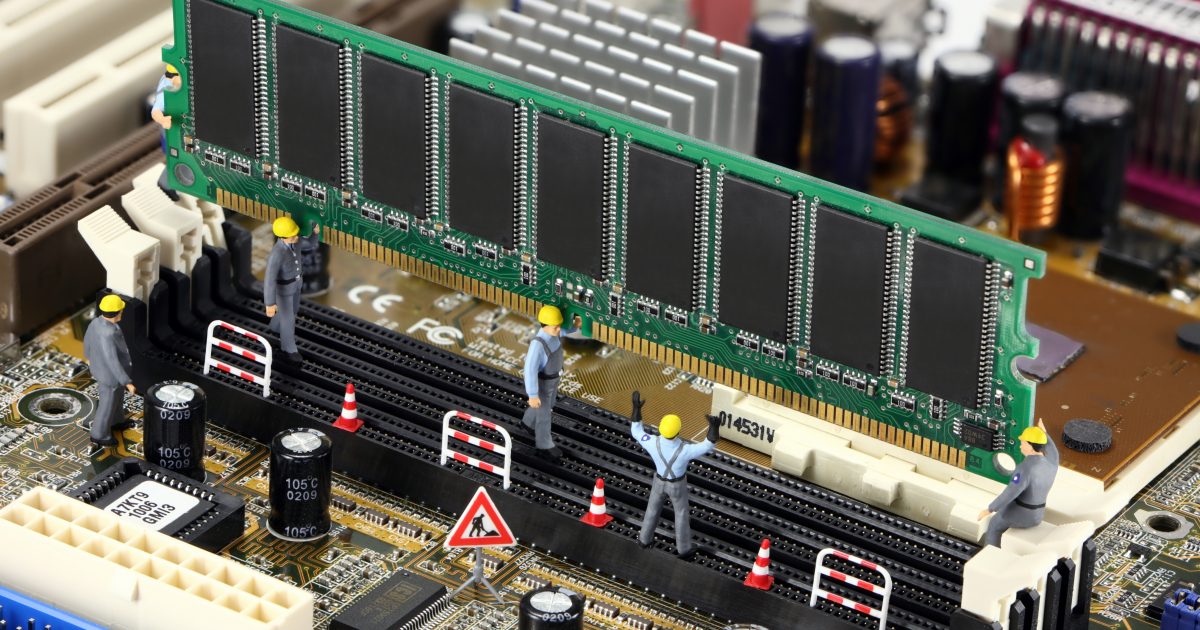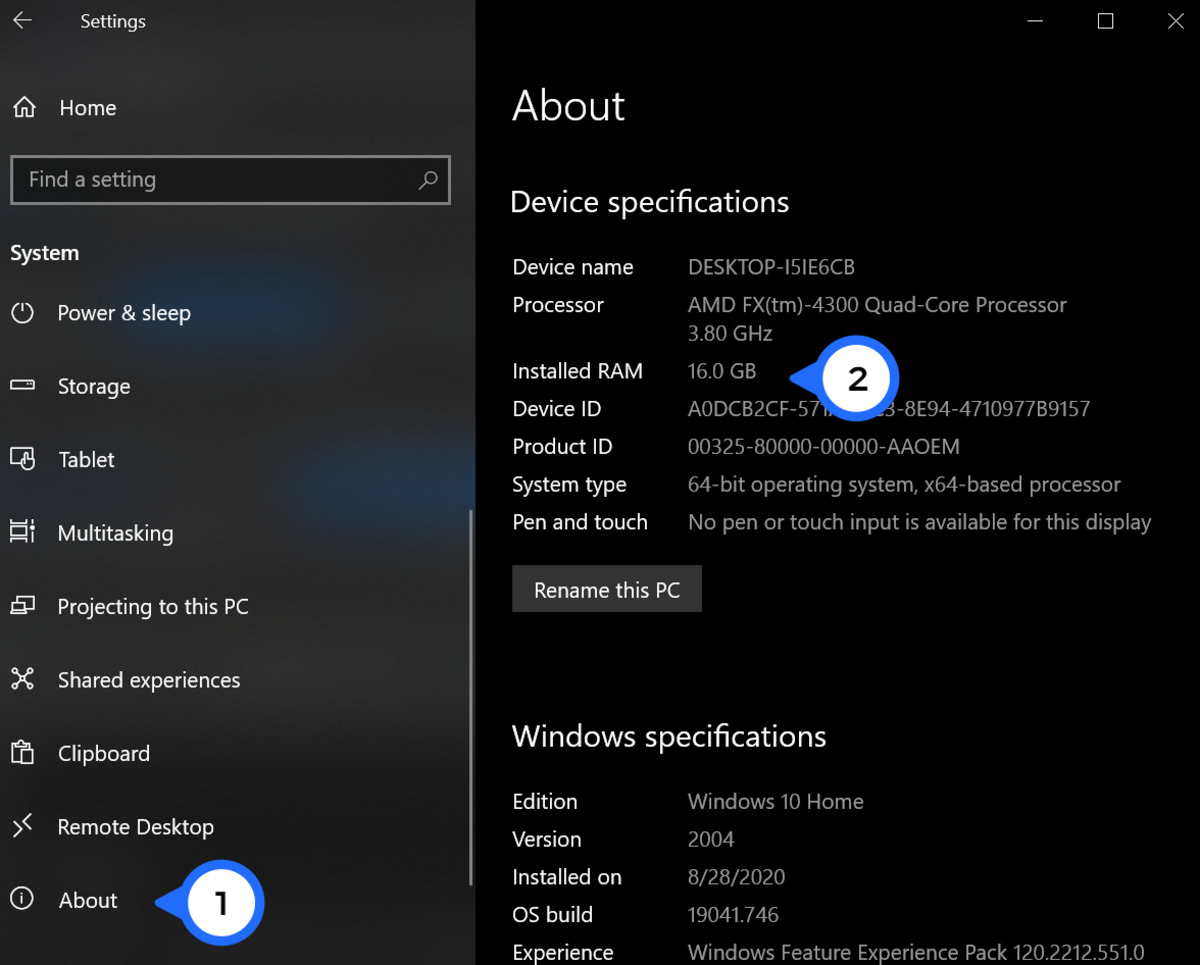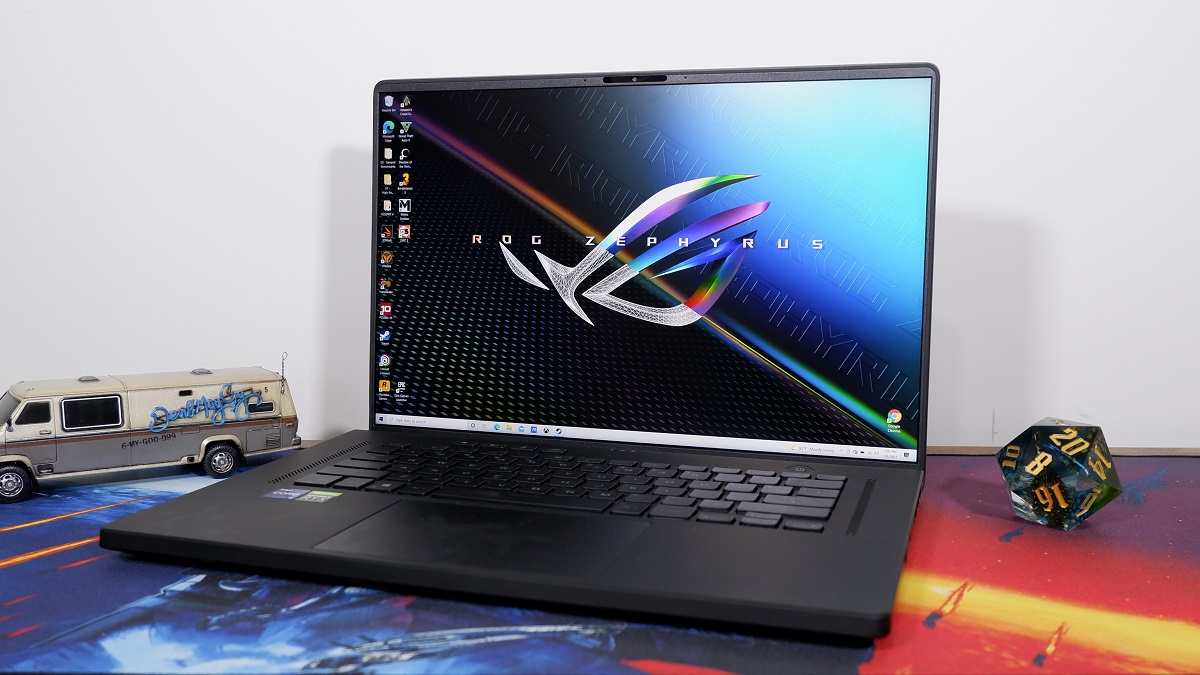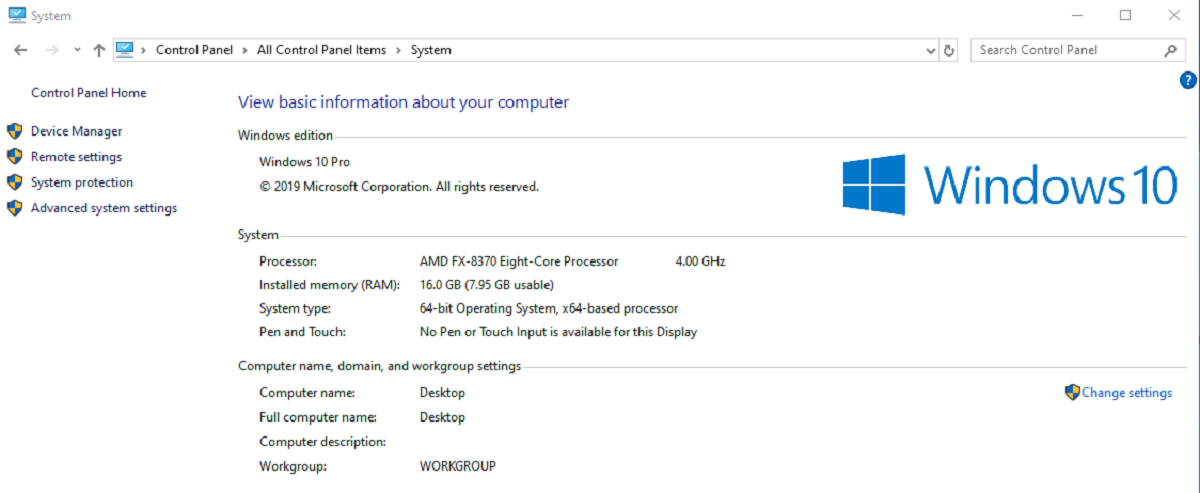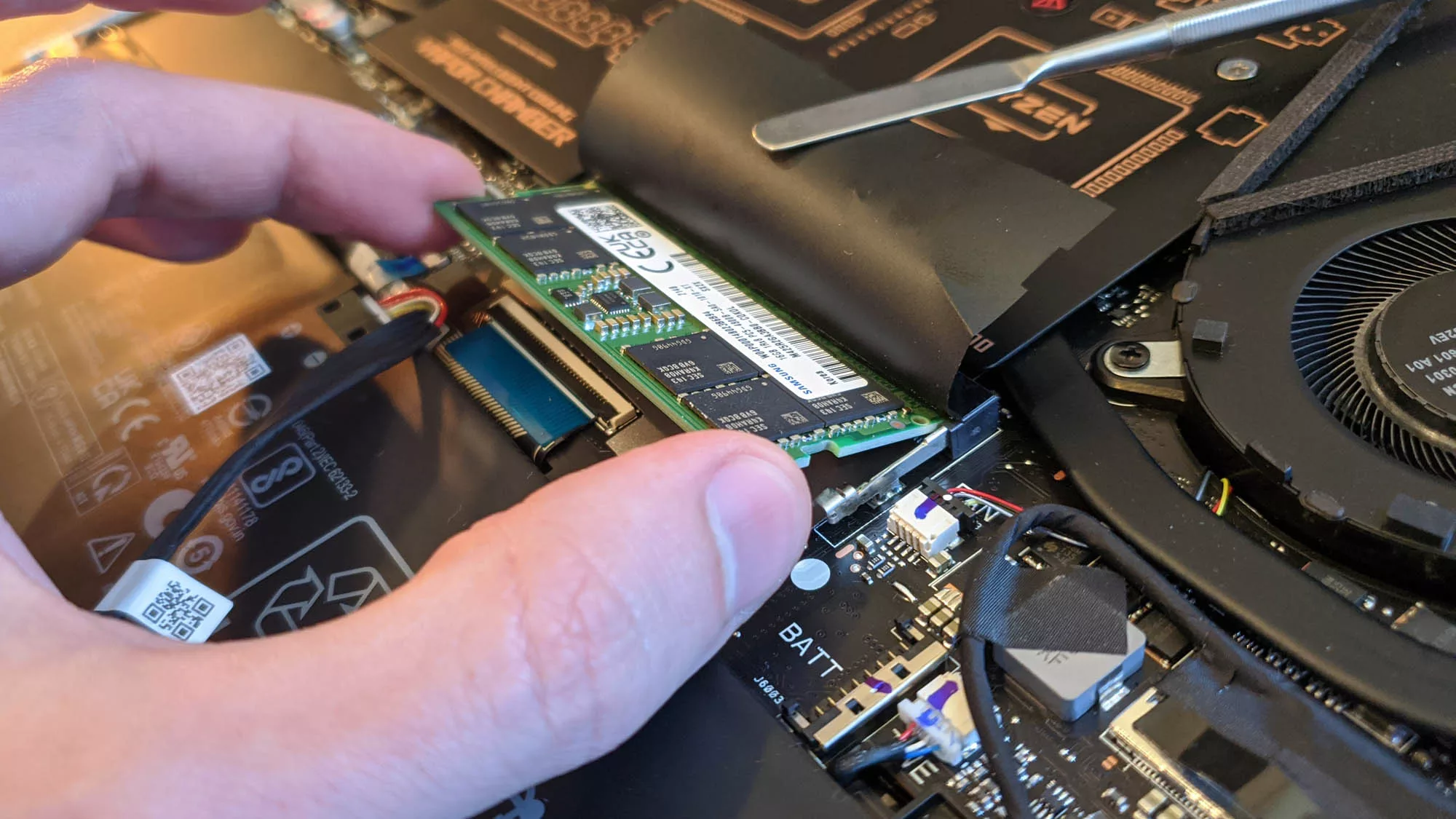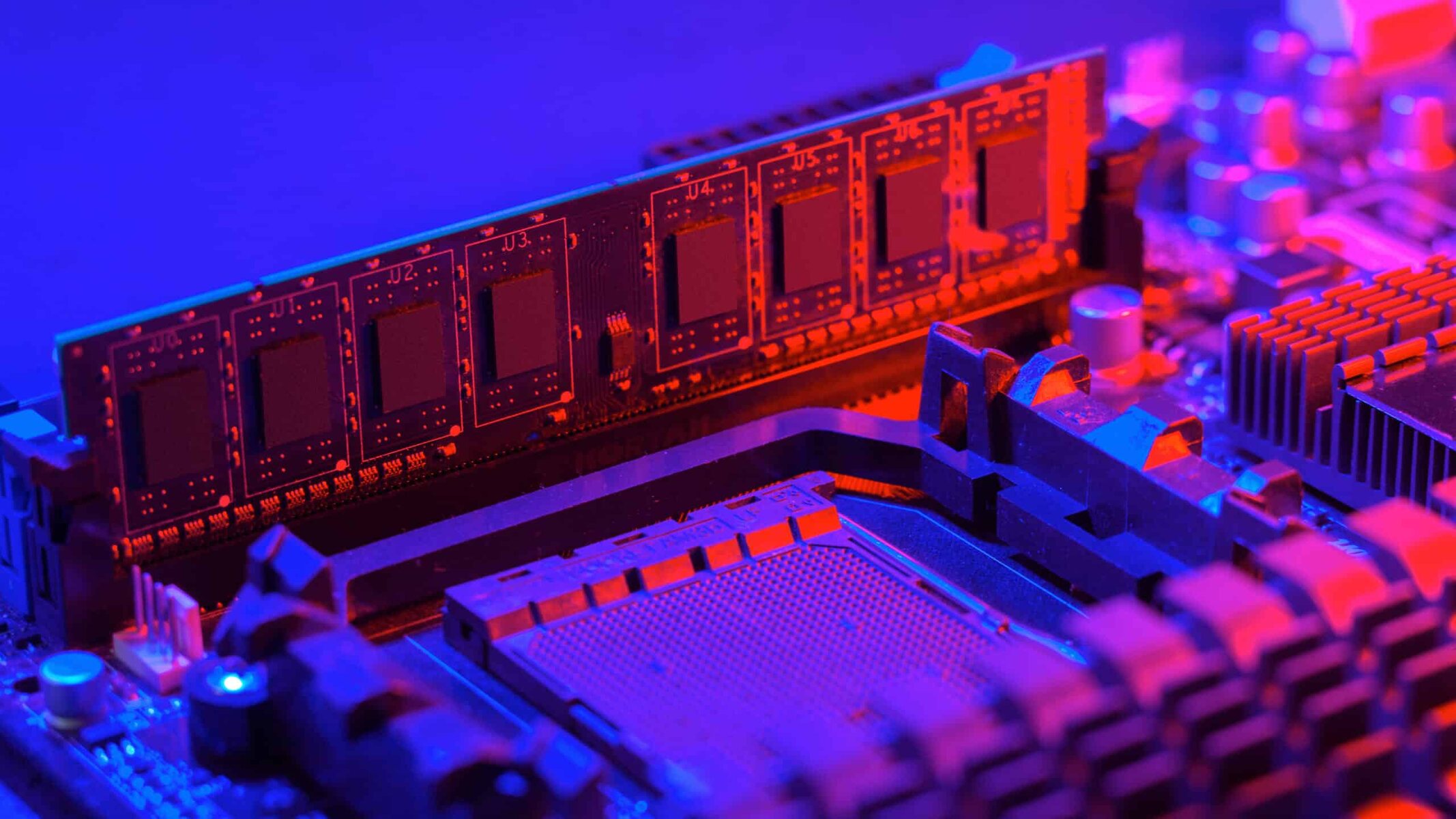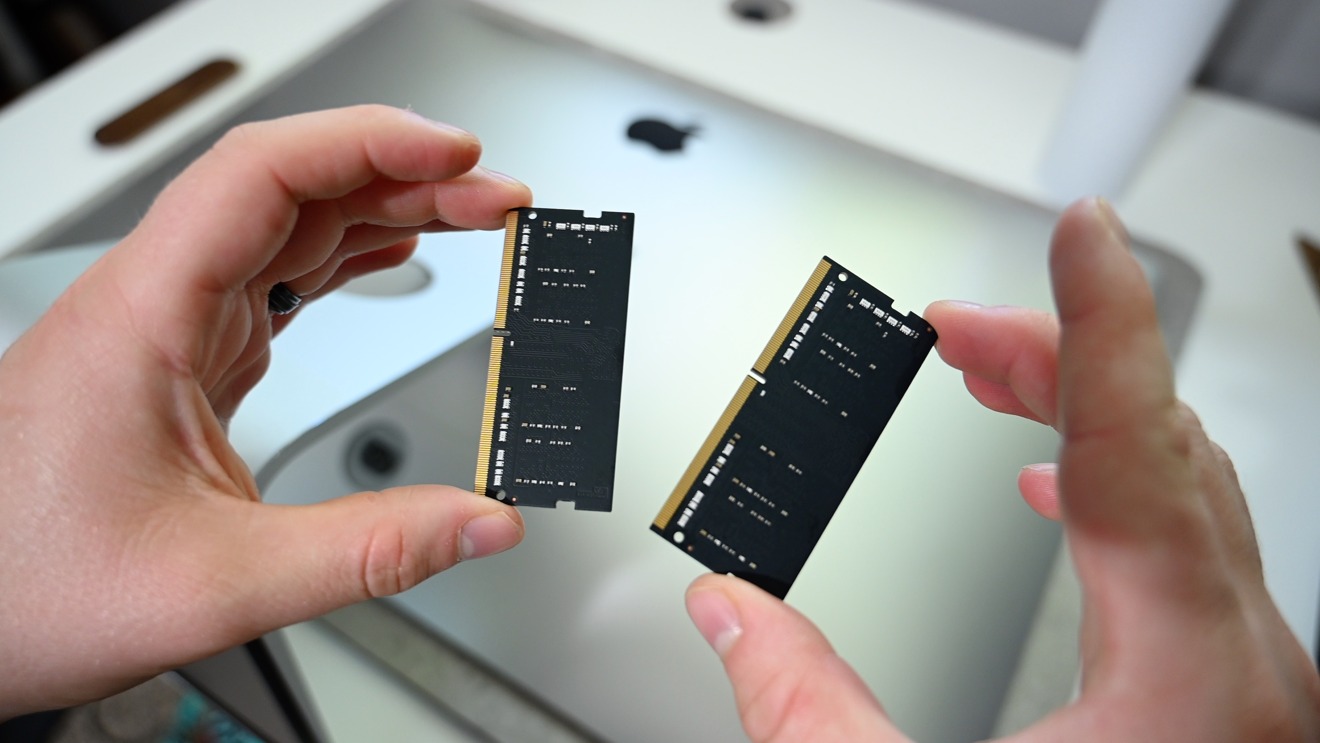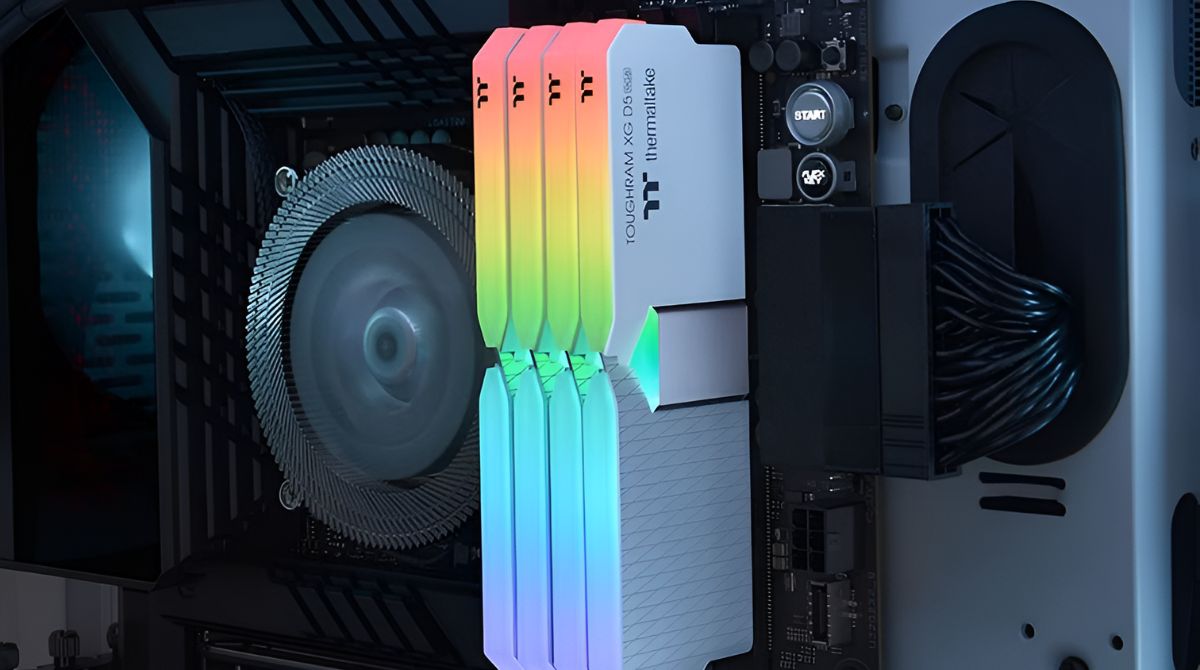Introduction
RAM (Random Access Memory) is a crucial component of any computer system, as it directly influences performance and efficiency. Upgrading or replacing RAM can significantly enhance the overall speed and capabilities of your computer. However, before you dive into the world of RAM upgrade, it is important to ensure compatibility with your system. In this article, we will explore how to determine if RAM is compatible with your computer and provide guidance on the different specifications to consider.
Understanding RAM compatibility is essential to prevent potential issues such as instability, system crashes, or even damage to your computer. By following the steps outlined in this guide, you will be able to confidently identify and install the right RAM for your machine, ensuring optimal performance.
Before we delve into the technical details, it is important to note that RAM is not a one-size-fits-all component. Different computer models and motherboards have specific requirements and limitations when it comes to RAM compatibility. Therefore, it is crucial to familiarize yourself with your computer’s specifications and conduct thorough research to avoid any compatibility issues.
In the following sections, we will walk you through the steps to check your computer’s specifications, identify the type of RAM required, determine the maximum capacity of RAM, check for speed and CAS latency requirements, and take into consideration any special features or compatibility considerations. By following these steps, you will be well on your way to finding and installing compatible RAM that will optimize your computer’s performance.
Understanding RAM Compatibility
RAM compatibility refers to the ability of a RAM module to work seamlessly with your computer’s motherboard and other components. It is crucial to ensure compatibility to avoid performance issues or system instability. A mismatched or incompatible RAM module can result in crashes, errors, or even damage to your hardware.
There are several factors to consider when determining RAM compatibility. These include the type of RAM, the maximum capacity supported by your system, the speed and CAS latency requirements, and any special features or compatibility considerations.
The type of RAM refers to the physical and electrical characteristics of the module. The most common types are DDR3, DDR4, and DDR5. Each type has a different pin layout and voltage requirement, so it is important to select the one that is supported by your motherboard. Trying to install an incompatible type of RAM will prevent the computer from booting or cause other malfunctioning issues.
Another important factor is the maximum capacity of RAM supported by your system. This refers to the total amount of RAM that your motherboard can handle. For instance, if your system can support a maximum of 16GB of RAM, installing a 32GB module will not be compatible. It is essential to determine and abide by the maximum capacity specified by your motherboard’s manufacturer.
The speed and CAS latency are also crucial considerations for RAM compatibility. The speed, measured in megahertz (MHz), determines how quickly data can be transferred to and from the RAM module. CAS latency, measured in clock cycles, determines the delay in accessing data from the RAM. It is important to select RAM modules that match the speed and CAS latency requirements of your motherboard to ensure optimal performance.
Additionally, some RAM modules may have special features or compatibility considerations that you need to be aware of. For example, some motherboards support ECC (Error Correcting Code) RAM, which is designed to detect and correct errors in data transmission. Other considerations may include the physical dimensions of the module or the need for low-profile or high-profile RAM to fit into your computer’s case.
Understanding RAM compatibility is crucial to ensure a smooth and successful RAM upgrade or replacement. By considering the type, maximum capacity, speed and CAS latency requirements, and any special features or compatibility considerations, you can confidently select a compatible RAM module that will enhance the performance of your computer without any compatibility issues or system instability.
Checking Your Computer’s Specifications
Before you can determine if a RAM module is compatible with your computer, it is crucial to check your computer’s specifications. This information will provide valuable insights into the type of RAM supported, the maximum capacity, and other important compatibility factors.
There are various ways to check your computer’s specifications, depending on your operating system. Here are a few methods that you can use:
- System Information: On Windows, you can use the built-in System Information tool. Simply press the “Win + R” keys to open the Run dialog, type “msinfo32,” and hit Enter. This will display a comprehensive overview of your computer’s specifications, including the installed RAM and its current configuration.
- System Profiler: On macOS, you can access System Profiler by clicking on the Apple menu, selecting “About This Mac,” and then clicking on “System Report.” This will provide detailed information about your Mac’s hardware, including the RAM configuration.
- BIOS/UEFI: Another method to check your computer’s specifications is by accessing the BIOS or UEFI settings. Restart your computer and look for a key to press (such as F2, Del, or Esc) to enter the BIOS or UEFI menu. Inside the menu, you can find information about your computer’s hardware, including the RAM capacity and configuration.
- Third-Party Software: There are also third-party software tools available that can provide detailed information about your computer’s specifications. Programs like CPU-Z or Speccy can gather comprehensive hardware information, including RAM details, in an easy-to-understand format.
Once you have accessed the system information, look for details about the installed RAM. Take note of the RAM type (DDR3, DDR4, etc.), the current capacity, and any other relevant specifications provided. This information will serve as a starting point for determining the compatibility of potential RAM upgrades or replacements.
In addition to checking your computer’s specifications, it is also helpful to consult the manufacturer’s website or documentation for your computer or motherboard model. These resources often provide detailed information about compatible RAM types, maximum capacities, and any specific requirements or recommendations for RAM upgrades.
By taking the time to check your computer’s specifications and gather the necessary information, you will be equipped with the knowledge needed to make informed decisions when it comes to selecting compatible RAM modules. This will ensure a smooth and successful RAM upgrade or replacement process without any compatibility issues.
Identifying the Type of RAM
One of the crucial steps in determining RAM compatibility is identifying the correct type of RAM required for your computer. Different types of RAM have different physical characteristics, pin layouts, and voltage requirements, making it essential to select the right type that is supported by your motherboard.
The most common types of RAM in use today are DDR3, DDR4, and DDR5. Here’s how you can identify the type of RAM your computer requires:
- Check the computer’s documentation or manufacturer’s website: The easiest way to determine the type of RAM compatible with your computer is to consult the documentation provided by the manufacturer or visit their website. They will often list the compatible RAM types and specifications for your specific model.
- Look inside the computer case: If you are comfortable opening your computer case, you can physically inspect the RAM modules installed. The type of RAM is usually indicated on the label or engraved on the module itself. Look for labels such as DDR3, DDR4, or DDR5 to identify the type you currently have.
- Use system information tools: System information tools like CPU-Z, Speccy, or the built-in system information tool on your operating system can provide detailed information about your computer’s hardware, including the type of RAM installed. Launch the tool and locate the RAM section to identify the type.
- Consult motherboard specifications: If you are familiar with your computer’s motherboard model, you can search for its specifications online. The specifications will typically list the supported RAM types, allowing you to identify the type compatible with your system.
Once you have identified the type of RAM required (DDR3, DDR4, or DDR5), it is essential to ensure that any new RAM modules you consider are compatible with this specific type. Attempting to install incompatible RAM can result in system instability or prevent your computer from booting.
It is worth noting that DDR4 is currently the most common type of RAM in use, as it offers improved performance and energy efficiency compared to its predecessors. However, newer systems may be compatible with the even faster DDR5 RAM. If you are unsure which type of RAM your system supports, consulting the manufacturer’s documentation or seeking technical support is advised.
By correctly identifying the type of RAM required for your computer, you can confidently move forward with selecting compatible RAM modules. This ensures that any RAM upgrades or replacements you make will align with your system’s specifications and deliver optimal performance without any compatibility issues.
Determining the Maximum Capacity of RAM
Understanding the maximum capacity of RAM that your computer can support is a crucial step in determining RAM compatibility. Each computer or motherboard has a limit to the amount of RAM it can handle, and exceeding this limit can result in compatibility issues. By determining the maximum capacity, you can ensure that you select RAM modules that are within the supported range.
Here are a few ways to determine the maximum capacity of RAM for your computer:
- Check the computer’s documentation: The easiest way to find the maximum capacity of RAM supported by your computer is by consulting the manufacturer’s documentation or visiting their website. Look for the specifications or technical details of your specific model, and it should mention the maximum RAM capacity.
- Refer to the motherboard specifications: If you are familiar with the model of your motherboard, you can search for its specifications online. The motherboard specifications typically list the maximum capacity of RAM that it can support. Keep in mind that the motherboard’s maximum capacity will override any limitations imposed by the computer model itself.
- Use system information tools: System information tools like CPU-Z, Speccy, or the built-in system information tool on your operating system can also provide information about the maximum capacity of RAM supported by your computer. Navigate to the memory section of the tool to find the maximum capacity mentioned.
Determining the maximum RAM capacity is crucial because installing more RAM than the supported limit may result in the system only recognizing a portion of it, or it may not boot at all. For example, if your computer or motherboard supports a maximum of 16GB of RAM, installing 32GB modules will not be compatible.
It is important to note that the maximum RAM capacity can vary depending on the operating system and the version of the operating system you are running. For instance, older versions of Windows may have limitations on the maximum RAM they can recognize and utilize. Therefore, it is beneficial to also consider the limitations imposed by your operating system to ensure efficient RAM utilization.
By determining the maximum capacity of RAM supported by your computer or motherboard, you can select RAM modules that align with these specifications. This ensures compatibility and prevents any issues that may arise from exceeding the maximum capacity. Properly adhering to the maximum capacity requirements will enable your computer to utilize the full potential of the installed RAM and enhance its overall performance.
Checking the Speed and CAS Latency Requirements
When it comes to RAM compatibility, it is essential to consider the speed and CAS latency requirements. The speed of RAM determines how quickly data can be transferred to and from the module, while the CAS latency measures the delay in accessing data. Ensuring that your new RAM modules match the speed and CAS latency requirements of your computer is crucial for optimal performance and compatibility.
Here’s how you can check the speed and CAS latency requirements for your RAM:
- Consult the computer’s documentation: In many cases, the computer’s documentation or the manufacturer’s website will list the recommended RAM speed and CAS latency values for your specific model. Look for the specifications or technical details section, where you should find this information.
- Use system information tools: System information tools like CPU-Z, Speccy, or the built-in information tool of your operating system can provide details about the current speed and CAS latency values of your installed RAM. Navigate to the memory section of the tool to find this information.
- Check the motherboard specifications: If you know the model of your motherboard, you can search for its specifications online. The specifications should mention the supported RAM speed and CAS latency values. It’s worth noting that some motherboards may support overclocking, allowing RAM to operate at higher speeds than the default specification.
- Verify with the RAM manufacturer’s specifications: If you are planning to purchase new RAM modules, check the specifications provided by the manufacturer. They will list the speed and CAS latency values of the RAM. Ensure that the RAM modules you choose match or are compatible with the required values for your computer.
Knowing the speed and CAS latency requirements of your RAM will help you select compatible modules that align with your system’s specifications. Installing RAM modules that do not meet these requirements can result in compatibility issues or suboptimal performance.
It’s important to mention that RAM modules with higher speeds and lower CAS latency values tend to offer better performance. However, if your computer has existing RAM modules and you plan on adding more, it is advisable to match the speed and CAS latency values to maintain compatibility and avoid potential conflicts. Mixing RAM modules with different speeds or CAS latency values can lead to stability issues or prevent the computer from booting.
By carefully checking and considering the speed and CAS latency requirements, you can ensure that the new RAM modules you choose are compatible with your computer. This will optimize the performance of your system and prevent any potential issues that may arise from mismatched specifications or incompatible RAM modules.
Checking for any Special Features or Compatibility Considerations
In addition to the type, capacity, speed, and CAS latency requirements, it is important to consider any special features or compatibility considerations when determining RAM compatibility. These factors can vary depending on your computer model, motherboard, and specific requirements. Considering these additional considerations will ensure a seamless and successful RAM upgrade or replacement process.
Here are a few special features and compatibility considerations to check for:
- Error Correcting Code (ECC) support: Some motherboards support ECC RAM, which is designed to detect and correct errors in data transmission. If your computer or motherboard supports ECC RAM, it is important to select compatible modules to ensure proper functioning. Check the documentation, specifications, or manufacturer’s website for information regarding ECC support.
- Physical dimensions: RAM modules come in different form factors, such as DIMM (Dual In-line Memory Module) or SO-DIMM (Small Outline DIMM). Ensure that the physical dimensions of the RAM module you choose match the available slots on your motherboard or computer. Consult the documentation or specifications of your computer or motherboard for information about supported form factors.
- Compatibility with other components: Consider any compatibility considerations related to other components in your computer. For example, if you have a CPU or graphics card that requires specific memory configurations or compatibility, ensure that the RAM modules you choose meet these requirements to ensure optimal performance.
- Overclocking compatibility: If you plan to overclock your system, it is important to choose RAM modules that are compatible with this feature. Overclocking involves running the RAM at higher speeds than the default specifications. Ensure that the RAM modules you choose have been tested and certified for overclocking, if that is your intention.
- Special features or requirements: Some special features or requirements may be specific to your computer model or motherboard. This can include support for XMP (Extreme Memory Profile) for easy configuration, support for higher voltage RAM modules, or compatibility considerations for specific operating systems or software. Refer to the documentation, manufacturer’s website, or technical forums for information regarding these specific considerations.
By considering these special features and compatibility considerations, you can ensure that the RAM modules you choose are not only compatible with your computer’s specifications but also meet any additional requirements or considerations. This will help you avoid any compatibility issues, stability problems, or functionality limitations that may arise from overlooking these factors.
It is always recommended to consult the computer’s documentation, the motherboard specifications, or the manufacturer’s website for detailed information regarding any special features or compatibility considerations. This will provide you with accurate and reliable information specific to your computer, ensuring a successful RAM upgrade or replacement process.
Researching and Identifying Compatible RAM
Once you have gathered all the necessary information about your computer’s specifications, RAM requirements, and any special considerations, it’s time to research and identify compatible RAM modules. This step is crucial to ensure a smooth and successful RAM upgrade or replacement process.
Here are some tips to help you research and identify compatible RAM for your computer:
- Check the manufacturer’s recommendations: Start by checking the computer or motherboard manufacturer’s website for their recommended RAM modules. They often provide a list of compatible models or specific recommendations based on your computer’s specifications. Following these recommendations can help ensure seamless compatibility.
- Read user reviews and forums: User reviews and forums can provide useful insights from people who have already upgraded their RAM or have experience with specific models. Look for feedback and recommendations from users who have a similar computer model or motherboard as yours. This can help you identify reliable and compatible RAM options.
- Consult online RAM compatibility tools: There are online tools available that can check your computer’s specifications and provide compatible RAM suggestions. These tools analyze your system information and recommend suitable RAM modules based on compatibility and performance. Be sure to use reputable and reliable tools for accurate results.
- Consider the RAM brand: Opt for reputable and established RAM brands that have a track record of producing reliable and compatible modules. Popular brands often provide better compatibility and support. Look for brands that offer good customer service and a warranty on their products.
- Check for verified compatibility: Some RAM manufacturers provide a compatibility list on their website, indicating which motherboard models have been specifically tested and verified with their RAM modules. This can offer peace of mind that the RAM you choose is compatible with your particular motherboard.
It is important to note that not all RAM modules available on the market will be compatible with your computer. Carefully use the gathered information about your computer’s specifications, type, capacity, speed, CAS latency requirements, and any special considerations to narrow down your options and make informed decisions.
When selecting RAM modules, ensure that they meet not only the technical requirements but also your performance and budget needs. Consider factors such as the capacity, speed, and brand reputation to determine the best RAM modules for your system.
By conducting thorough research and identifying compatible RAM modules, you can confidently proceed with your RAM upgrade or replacement. This approach minimizes the risk of compatibility issues, ensures optimal performance, and leads to a smooth and successful installation process.
Conclusion
Determining RAM compatibility is a crucial step when upgrading or replacing your computer’s memory. By considering factors such as the type of RAM, maximum capacity, speed, CAS latency requirements, and any special features or compatibility considerations, you can ensure a seamless and successful RAM upgrade process. Understanding your computer’s specifications, checking for the right type and capacity of RAM, and considering speed and latency requirements will help you select compatible modules that optimize your system’s performance.
Consulting the manufacturer’s documentation, accessing system information tools, and researching user reviews and forums are valuable resources to identify suitable RAM options. Taking into account the recommendations from the manufacturer and considering reputable brands will provide peace of mind in terms of compatibility and reliability. Additionally, exploring online RAM compatibility tools and verifying compatibility through a manufacturer’s list can further assist in the selection process.
By thoroughly researching and identifying compatible RAM, you can ensure optimal performance, stability, and longevity for your computer. This will result in a smoother multitasking experience, improved application performance, and faster data access. Upgrading or replacing your RAM with compatible modules will enhance your computer’s overall capabilities, providing a more satisfying user experience.
Remember that understanding RAM compatibility is an ongoing process, as new technologies and advancements continue to emerge. Stay informed about the latest trends and updates in the RAM market to make well-informed decisions and keep your system up to date.
In conclusion, by following the steps outlined in this article and conducting thorough research, you can confidently select and install compatible RAM modules, unlocking the full potential of your computer and optimizing its performance.







